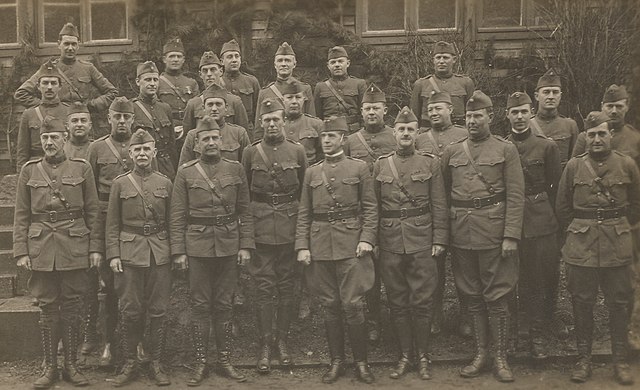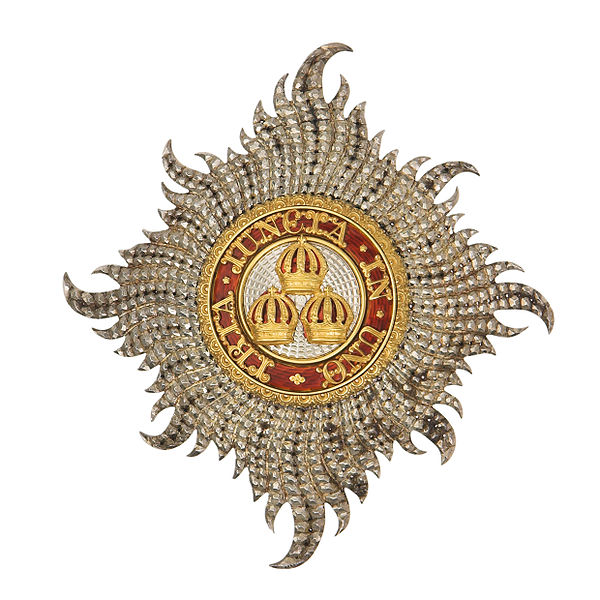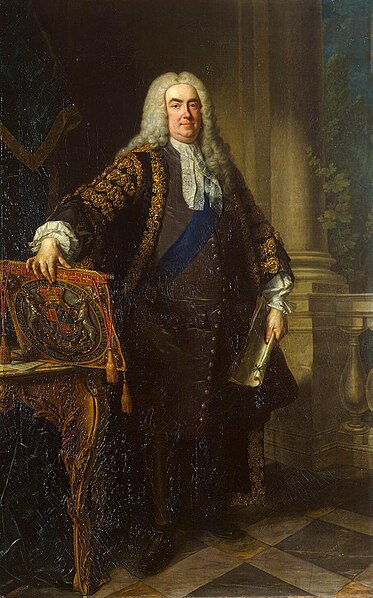George Catlett Marshall Jr. was an American army officer and statesman. He rose through the United States Army to become Chief of Staff of the U.S. Army under Presidents Franklin D. Roosevelt and Harry S. Truman, then served as Secretary of State and Secretary of Defense under Truman. Winston Churchill lauded Marshall as the "organizer of victory" for his leadership of the Allied victory in World War II. During the subsequent year, he attempted to but failed to avoid the impending Chinese Civil War. As Secretary of State, Marshall advocated for a U.S. economic and political commitment to post-war European recovery, including the Marshall Plan that bore his name. In recognition of this work, he was awarded the Nobel Peace Prize in 1953, the only Army general ever to receive the honor.
Official portrait, 1946
1900 VMI Keydets football team. Marshall circled
Major General Robert Lee Bullard (center, facing towards the right), the newly appointed commander of the 1st Division, and members of his divisional staff at Gondrecourt, France, 17 January 1918. To Bullard's right is Lieutenant Colonel George C. Marshall, the 1st Division's assistant chief of staff for operations.
General of the Armies John J. Pershing and members of his staff standing outside the State, War, and Navy Building in Washington, D.C., 23 September 1919. Pershing is second from left in front row. Marshall is behind Pershing.
The Most Honourable Order of the Bath is a British order of chivalry founded by King George I on 18 May 1725. The name derives from an elaborate medieval ceremony for preparing a candidate to receive his knighthood, of which ritual bathing was an element. While not all knights went through such an elaborate ceremony, knights so created were known as "knights of the Bath".
Most Honourable Order of the Bath breast star of a Knight / Dame Grand Cross (Civil Division)
Mildmay Fane, 2nd Earl of Westmorland, KB, with sash, c. 1630
Sir Robert Walpole, who as Prime Minister used the Order for political patronage
Admiral Lord Rodney (appointed a Knight Companion in 1780) wearing the riband and star of the Order.








